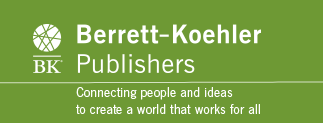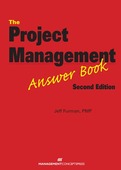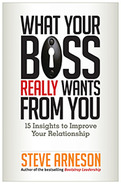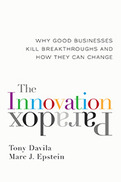The first edition of The Project Management Answer Book addressed all the key principles of project management that every project manager needs to know. With a new chapter on scrum agile, updates throughout, and many new PMP® test tips, this new edition builds on that solid foundation.
The structure of this update maps closely to the PMBOK® Guide, Fifth Edition, and is designed to assist anyone studying for the PMP® and other certification exams. Helpful sections cover:
• Networking and social media tips for PMs, including the best professional organizations, virtual groups, and podcast resources
• The formulas PMs need to know, plus a template to help certification candidates prepare and self-test for their exams
• Quick study sheet for the processes covered on the PMP® exam
• Key changes in PMBOK® Guide, Fifth Edition, for readers familiar with earlier versions who want “the skinny” on the new version.
PMs at every level will find real gold in the information nuggets provided in this new edition. Those new to project management will find the comprehensive coverage and the depth of the answers especially valuable, and will like the easy-to-read style and Q&A format. For experienced managers looking for new tools and skills to help them pass their PMP® or other certification exams, this is a must-have resource.
Uses fifteen straightforward questions to help you uncover what drives your boss and use what you've learned to take charge of the relationship.
* Offers a concise, practical guide to improving your most important work relationship
* Uses fifteen straightforward questions to help you uncover what drives your boss and use what you've learned to take charge of the relationship
* Features real-world examples of people who have used these techniques to improve their relationship with even the most difficult bosses
Whether you're an entry-level employee, a middle manager, or a high level executive, your most important work relationship is the one you have with your boss. If you're connecting well, everything's great; but if you're not getting along, it can be a nerve-wracking and frustrating experience. It's why executive coach Steve Arneson is so often asked: what does my boss want from me? In this book he offers a powerful set of questions to help you get the answer.
But first, Arneson warns you to give up any thoughts of trying to manage or "improve," your boss. It's true, sometimes bosses can be hard to read. They're not always clear about their expectations, act in seemingly inexplicable ways, and can have hidden motives that have nothing to do with helping you achieve your career goals Still, they're not going to change for you-the solution lies in figuring out what makes them tick and adapting your own work style to make the relationship work more effectively.
In this pragmatic and accessible guide, Arneson shows you how to find the answers to fifteen essential questions that will help you understand your boss's motives. The first section, Study Your Boss, features ten questions that will help you figure out your boss's leadership style, goals, work relationships, and other factors that drive his or her behavior. Given that understanding, you'll move on to five questions that reveal How Your Boss Sees You. Finally, you'll bring it all together and develop a plan to Take Responsibility for the Relationship. Vivid real-world examples demonstrate Arneson's advice in action and show clearly how this process can be used to gain a more meaningful, productive, and enjoyable work life.
You can improve your relationship with the boss, but it takes insight, and the right attitude. Following Steve Arneson's straightforward, step-by-step method will help you reduce your stress, advance your career, and make things more pleasant for both of you.
The problem, say Tony Davila and Marc Epstein, is that the very processes and structures responsible for established companies' enduring success prevent them from developing breakthroughs. This is the innovation paradox.
Most established companies succeed through incremental innovation—taking a product they're known for and adding a feature here, cutting a cost there. It's a solid recipe for growth, but major breakthroughs are hard to achieve when everything about the way your organization is built and run is designed to reward making what already works work a little better. But incremental innovation can coexist with breakthrough thinking.
Using examples from both scrappy startups and long-term innovators such as IBM, 3M, Apple, and Google, Davila and Epstein explain how corporate culture, leadership style, strategy, incentives, and management systems can be structured to encourage breakthroughs. Then they bring it all together in a new model called the Startup Corporation, which combines the philosophy of the startup with the experience, resources, and network of an established company. Startup corporations encourage visionary thinking at all levels—instead of depending on a single Steve Jobs, they have dozens, even thousands of them.
Breakthrough innovation no longer has to be the nearly exclusive province of the new kids on the block. With Davila and Epstein's assistance, any company can develop paradigm-shifting products and services and maximize the ROI on its R&D.
2013
India, Miglani writes, is “the capital of chaos”: over a billion people living on one-third the space of the United States. And it was there that he learned to let go. The secret is to stop trying to control the chaos and focus on what you can control—your own actions, words, and thoughts. Move forward, make mistakes, trust your intuition, find your purpose.
In this inspiring book, Miglani shares the experiences and encounters that helped him finally get it. What happens when you find yourself in an Indian village with no money and a plane to catch? How could an educated urban woman agree to a marriage after two dates? What keeps a rural health worker motivated despite the enormous need and such limited ability to help? What does trying to catch an insanely overcrowded bus teach you about perfection? Embracing the chaos, Miglani found, “leads us down paths we never would have walked on...It brings out strengths we never knew existed inside of us.”
We all dream. We all imagine. And we all want to live our best life. But why is it that 90 percent of people admit that if they got to live their life over, they would live it differently? What keeps us comfortable with the status quo and unable to get beyond “What if”?
In part 1 of this book, Dr. Shirley Davis addresses these and other questions by guiding the reader through a personal journey of self-discovery, a search for significance, and an examination of the self-imposed limitations that can hijack our purpose, power, and possibilities.
In part 2, she details the readers' journies toward realizing their dreams by reimagining their lives, identifying their “why,” and developing a life plan to stay focused and accountable. She describes the right questions to ask, the right mindset to adopt, and the right relationships to build that will enable everyone to live the life he or she has always imagined.
Dr. Davis reveals the necessary steps for releasing the limits we place on ourselves as a result of life's tests, wrong thinking, and bad decisions. She helps readers overcome paralyzing fears that keep dreams on pause and inspires the confidence to jump first and grow wings on the way down.
Prove your effectiveness to anyone-and achieve professional success-by adopting the same ROI methods and metrics that leading companies use.
In an era of evidence-based inquiry, people need to be able to demonstrate the value of their projects credibly. But how do you do that when there isn't an obvious measure connected to the project, like increased sales?
In their new book Patti and Jack Phillips, the cofounders of ROI Institute, show how you can adopt the same methodology used by more than 6,000 organizations in seventy countries to evaluate large institutional initiatives. By following their six-step process, you can build a case for any project, process, or intervention, even so-called soft programs. For example, the first case study in the book involves successfully demonstrating the effectiveness of chaplaincy in an intensive care unit.
The authors explain how to link your project to a meaningful business outcome, make sure your project will actually influence that outcome, identify metrics that will show if you're making progress, collect and analyze data, and use the results to build support.
This book includes extensive examples from a wide range of organizations: businesses, nonprofits, schools, law enforcement, and more. It provides diagnostic tools and supportive practices and even offers advice on how to find a positive interpretation for results that don't conform to your anticipated outcome.
Answering the question Is it worth it? defines the ultimate value of any project. Using the methodology this book presents will keep your work relevant, your career on track, and your organization healthy.

























